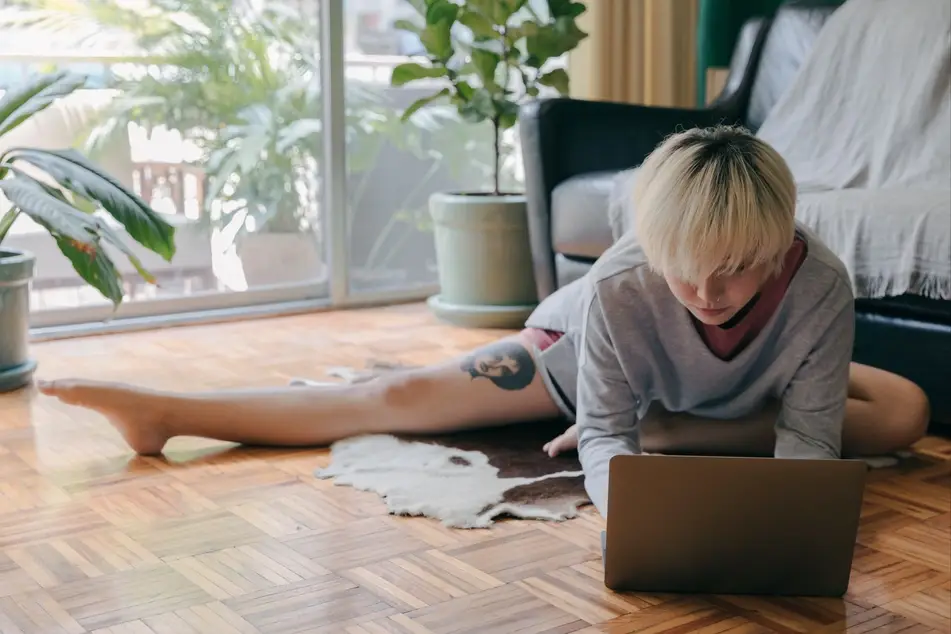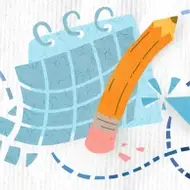No Energy After Work? Here's How to Take Better Breaks

We’ve all been told that it’s healthy to take breaks during the workday—and stepping away from your desk presents a great opportunity to recharge your batteries and passively process information. But if you find you have no energy after work, your breaks may not be as effective as they could be.
Establishing a good work break strategy can help improve the quality of your work. So how can you create one?
Productive work breaks
According to a Draugiem Group study, the ideal work-to-break ratio is 52 minutes of work followed by 17 minutes of rest. Neuroscience backs this finding up: the brain can have a high-energy spurt of about an hour before it needs about 15-20 minutes of downtime.
We may not be able to take advantage of a proper break for every hour of dedicated work we do, but we can be more strategic about when and how to take a productive work break. Because the fact is that work life is often stressful—but with the COVID-19 pandemic amplifying our anxiety and daily stressors, it has become critical to prevent burnout and having no energy after work.
That is where productive work breaks come in. Let’s be clear though: “productive” here doesn’t mean “work more.” Instead, it means making the most of your break so that you’ve given yourself a chance to hit refresh and can face the next thing on your to-do list with renewed energy.
Three steps to better breaks
Here the three steps to help you design your productive break strategy:
- Pay attention to when are the natural downtimes in your workday. This may change daily, weekly, or monthly, but a look at your calendar or doing another time audit can help you figure out those pockets of opportunity for yourself.
- Schedule those breaks! The more specific you are about when you want to take those breaks, the easier it will be for you—and others—to follow through.
- Keep an approved activity list. What do you usually do when you take a break? If you are mindlessly scrolling through the news or trying to fit just one more chore into your day, you may actually not be giving your mind or body a chance to hit refresh. To make sure you’re investing in your self-care during your break times, draft a list of low-maintenance activities that actually relax you. This could include catching up with a friend, having a short workout, or taking a power nap.
To hold yourself accountable, share your strategy with a friend or someone in your household, and put reminders on your phone so that you don’t let your downtime fall to the wayside.
How to avoid having no energy after work
The whole reason to be mindful about your productive break strategy is to better manage your energy during work so you don’t feel unmotivated, exhausted, and having no energy after work. Aside from taking regular breaks throughout the day, there are other things you can do to better manage your energy:
- Prioritize no more than three big to-dos daily. If you prioritize everything, you’re essentially prioritizing nothing. Given what we know about how the brain works best, be clear about what your daily priorities are and focus on those first. Anything more is extra and non-essential.
- Listen to your body. Sometimes, the body’s physiological responses mimic stress and anxiety. To curb that from happening as much as possible, stay hydrated throughout the day and, whenever you eat, do your best to make healthy choices. Pay attention to things like eye strain or headache if you work in front of a computer for extended periods of time: the longer you ignore your discomfort, the more likely you’ll face inconvenient disruptions to your workflow later. That’s why breaks—even just a few minutes at a time—are important!
- Be aware of when and how you work best. If you notice that you do your best brainstorming or project work in the morning, then take that into consideration when you plan your day. If you find yourself unable to focus after more than three calls in the afternoon, don’t schedule more. This may feel restrictive, but having this kind of awareness will help you feel more comfortable and confident about work, while also allowing you to have more freedom with your personal time.
- Separate where you work from where you play and rest. This is a big one, especially since so many of us are working from home. Even if you don’t have the square-footage for a dedicated home office, make sure you physically move between spaces to create clear signals for your brain—and the people in your household—when you’re at work and when you’re not. For example, work is at one end of your dining table and when you get up, you are off work.
- Be vigilant of your boundaries. Establishing and enacting your boundaries can feel challenging, but the more you practice and share them with others, the easier it will be for you to manage your energy.
- “Talk” it out. If you ever do find yourself unmotivated, exhausted, or edging closer to having no energy at work, don’t be afraid to tell someone! Sometimes, just saying it to someone you trust can alleviate some of your overwhelm. And if you don’t feel comfortable telling someone, talk it out with yourself—by writing! Get all your thoughts and feelings out on the page, which can help create some necessary distance so you’re able to figure out possible solutions.
***
Do you have tips for keeping productivity on track? Share them with us on Facebook.
Nisha Kumar Kulkarni is a writer and creative coach in New York City. She helps women living with chronic illness and mental health challenges to pursue their passion projects without compromising their health.






